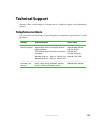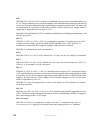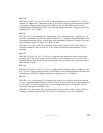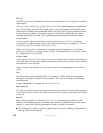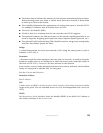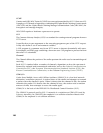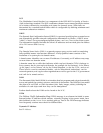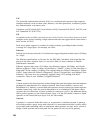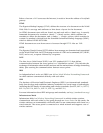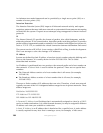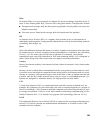178
www.gateway.com
802.1Q
IEEE 802.1Q is the IEEE standard for Virtual Local Area Networks (VLANs) specific to wireless
technologies.
(See http://www.ieee802.org/1/pages/802.1Q.html.) The standard addresses the problem of
how to break large networks into smaller parts to prevent broadcast and multicast data
traffic from consuming more bandwidth than is necessary. 802.11Q also provides for better
security between segments of internal networks. The 802.1Q specification provides a
standard method for inserting VLAN membership information into Ethernet frames.
Access Point
An access point is the communication hub for the devices on a WLAN, providing a
connection or bridge between wireless and wired network devices. It supports a Wireless
Networking Framework called Infrastructure Mode.
When one access point is connected to wired network and supports a set of wireless
stations, it is referred to as a basic service set (BSS). An extended service set (ESS) is created
by combining two or more BSSs.
Ad-hoc Mode
Ad-hoc mode is a Wireless Networking Framework in which stations communicate directly
with each other. It is useful for quickly establishing a network in situations where formal
infrastructure is not required.
Ad-hoc mode is also referred to as peer-to-peer mode or an independent basic service set
(IBSS).
AES
The Advanced Encryption Standard (AES) is a symmetric 128-bit block data encryption
technique developed to replace DES encryption. AES works at multiple network layers
simultaneously.
Further information is available on the NIST Web site.
Basic Rate Set
The basic rate set defines the transmission rates that are mandatory for any station wanting
to join this wireless network. All stations must be able to receive data at the rates listed
in this set.
Beacon
Beacon frames provide the “heartbeat” of a WLAN, announcing the existence of the
network, and enabling stations to establish and maintain communications in an orderly
fashion. It carries the following information (some of which is optional):
■ The Timestamp is used by stations to update their local clock, enabling synchronization
among all associated stations.






